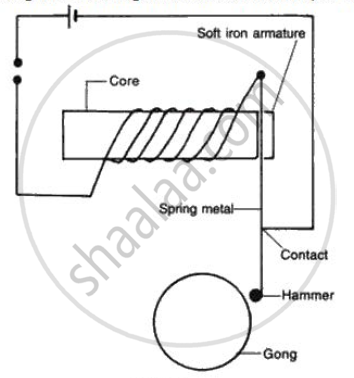Advertisements
Advertisements
प्रश्न
How many joules of electrical energy are transferred per second by a 6 V; 0.5 A lamp?
(a) 30 J/s
(b) 12 J/s
(c) 0.83 J/s
(d) 3 J/s
उत्तर १
(d) 3 J / s
Electrical energy transferred per second,
`E=V xx I xx t =6Vxx0.5Axx1s=3 "J/s"`
उत्तर २
(d) 3 J / s
Electrical energy transferred per second,
`E=V xx I xx t =6Vxx0.5Axx1s=3 "J/s"`
उत्तर ३
(d) 3 J / s
Electrical energy transferred per second,
`E=V xx I xx t =6Vxx0.5Axx1s=3 "J/s"`
उत्तर ४
(d) 3 J / s
Electrical energy transferred per second,
`E=V xx I xx t =6Vxx0.5Axx1s=3 "J/s"`
उत्तर ५
(d) 3 J / s
Electrical energy transferred per second,
`E=V xx I xx t =6Vxx0.5Axx1s=3 "J/s"`
उत्तर ६
(d) 3 J / s
Electrical energy transferred per second,
`E=V xx I xx t =6Vxx0.5Axx1s=3 "J/s"`
उत्तर ७
(d) 3 J / s
Electrical energy transferred per second,
`E=V xx I xx t =6Vxx0.5Axx1s=3 "J/s"`
उत्तर ८
(d) 3 J / s
Electrical energy transferred per second,
`E=V xx I xx t =6Vxx0.5Axx1s=3 "J/s"`
उत्तर ९
(d) 3 J / s
Electrical energy transferred per second,
`E=V xx I xx t =6Vxx0.5Axx1s=3 "J/s"`
APPEARS IN
संबंधित प्रश्न
An electric bulb is connected to a 220 V power supply line. If the bulb draws a current of 0.5 A, calculate the power of the bulb.
An electric fan runs from the 230 V mains. The current flowing through it is 0.4 A. At what rate is electrical energy transferred by the fan?
The table below shows the current in three different electrical appliances when connected to the 240 V mains supply:
| Appliance | Current |
| Kettle | 8.5 A |
| Lamp | 0.4 A |
| toaster | 4.8 A |
- Which appliance has the greatest electrical resistance? How does the data show this?
- The lamp is connected to the main supply by using a thin, twin-cored cable consisting of live and natural wires. State two reasons why this cable should not be used for connecting the kettle to the mains supply.
- Calculate the power rating of the kettle when it is operated from the 240 V mains supply.
- A main takes the kettle abroad where the mains supply is 120 V. What is the current is the kettle when it is operated from the 120 V supply?
Water in an electric kettle connected to a 220 V supply took 5 minutes to reach its boiling point. How long would it have taken if the supply voltage had fallen to 200 V?
Fig . shows the essent ial features of a battery operated bell. The hammer strikes the gong when the swi tch is closed . State and explain the effect of using the following material successively to form the core.

(a) Plastic
(b) Steel
(c) Copper
Name the physical quantity which is measured in kW.
Why is heating coil wound in the form of a helix in electric stove?
Mention three uses of the carbon arc.
Which material is the calorimeter commonly made of? Give one reason for using this material.
How does the heat produced by die passage of current in a metallic wire depend on the current in the wire?
